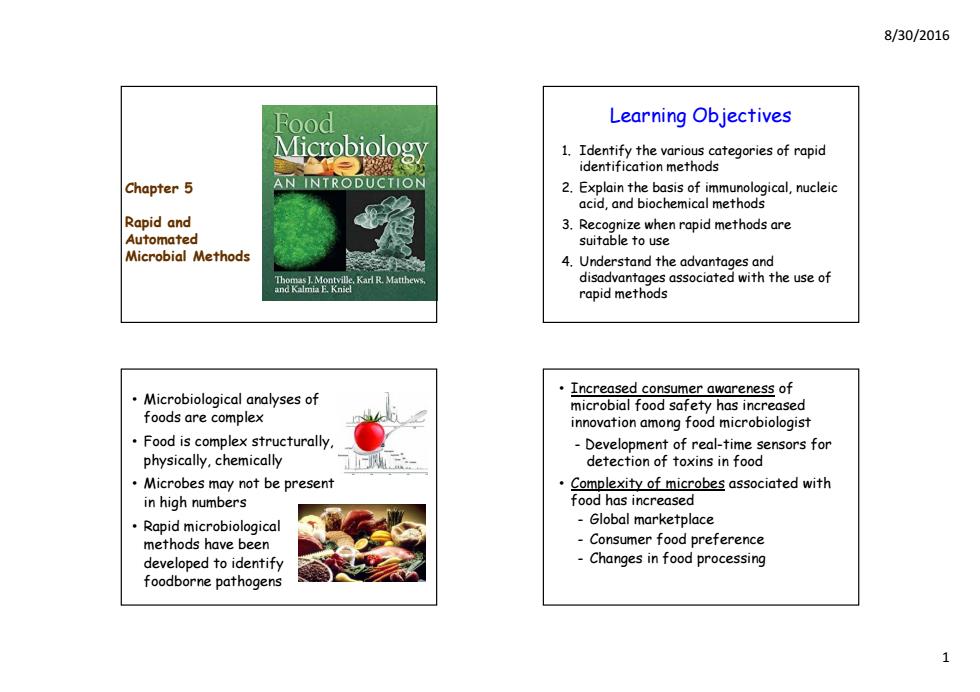正在加载图片...

8/30/2016 Food Learning Objectives Microbiology 1.Identify the various categories of rapid identification methods Chapter 5 AN INTRODUCTION 2.Explain the basis of immunological,nucleic acid,and biochemical methods Rapid and 3.Recognize when rapid methods are Automated suitable to use Microbial Methods 4.Understand the advantages and disadvantages associated with the use of rapid methods Increased consumer awareness of Microbiological analyses of microbial food safety has increased foods are complex innovation among food microbiologist Food is complex structurally, Development of real-time sensors for physically,chemically detection of toxins in food Microbes may not be present Complexity of microbes associated with in high numbers food has increased Rapid microbiological Global marketplace methods have been Consumer food preference developed to identify Changes in food processing foodborne pathogens8/30/2016 1 Chapter 5 Rapid and Automated Microbial Methods Learning Objectives 1. Identify the various categories of rapid identification methods 2. Explain the basis of immunological, nucleic acid, and biochemical methods 3. Recognize when rapid methods are suitable to use 4. Understand the advantages and disadvantages associated with the use of rapid methods • Microbiological analyses of foods are complex • Food is com p y, lex structurally, physically, chemically • Microbes may not be present in high numbers • Rapid microbiological methods have been developed to identify foodborne pathogens • Increased consumer awareness of microbial food safety has increased innovation among food microbiologist - Development of real-time sensors for detection of toxins in food • Complexity of microbes associated with food has increased - Global market place - Consumer food preference - Changes in food processing